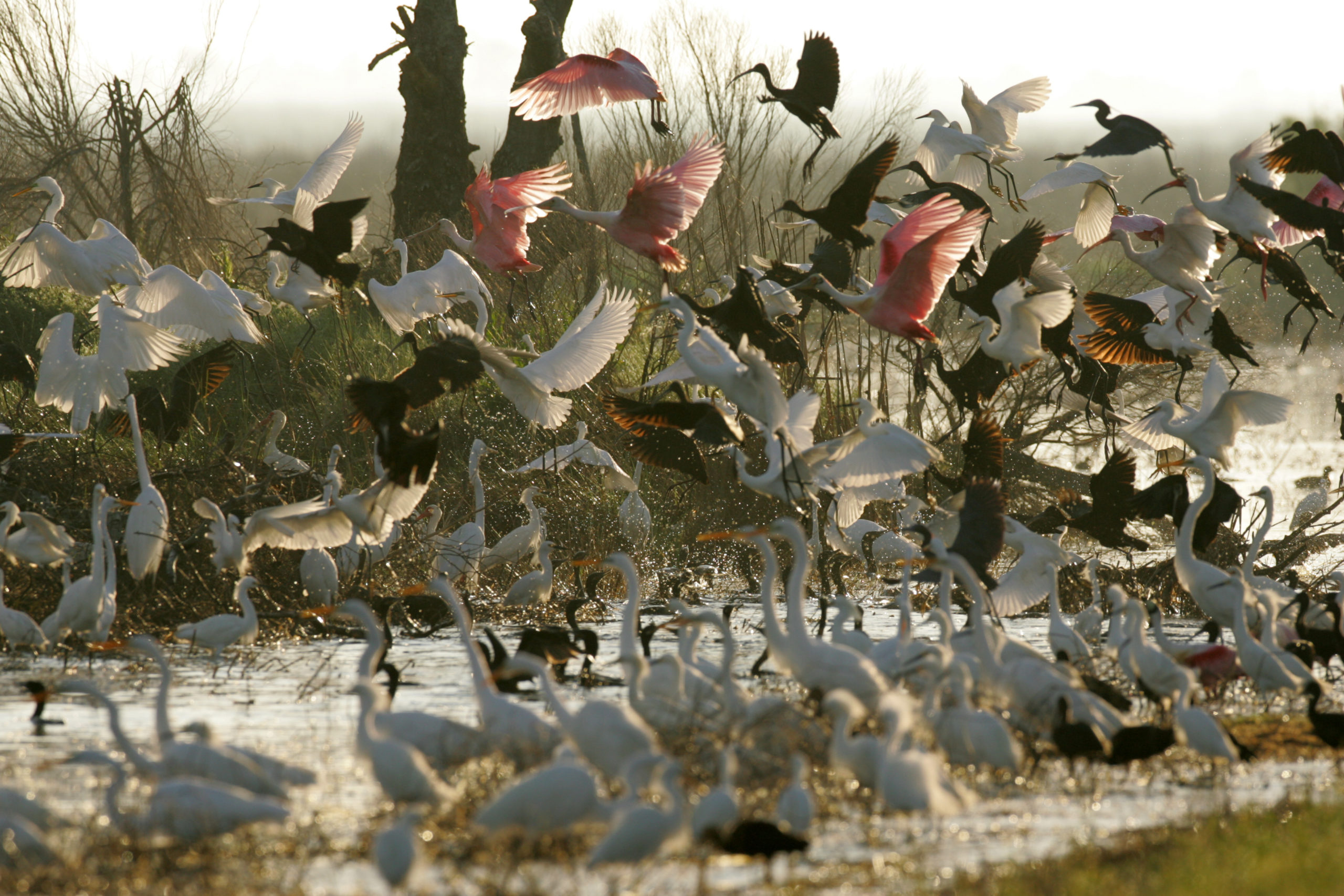We have much more to do and your continued support is needed now more than ever.
Leveraging the Individual Voice at Maurepas Swamp: The Case for Public Input

Corps reconsiders decision, selects Maurepas Swamp restoration for mitigating impacts from levee project
“Take action!”
“Sign this petition.”
“Call your representative.”
“Write your congressman.”
People often think their individual voice won’t make a difference, but this is a dangerous misconception that discourages people from taking action.
Louisianans recently used the public comment process to transform a proposed federal levee from something that would cause further harm to Maurepas Swamp into an effort that will help restore the iconic wetland.
The issue was a community protection project proposed by the U.S. Army Corps of Engineers: The West Shore Lake Pontchartrain Hurricane and Storm Damage Risk Reduction Project. This proposed levee would protect over 60,000 residents in southeast Louisiana between Baton Rouge and New Orleans from storm surge during hurricanes and tropical storms—a critical need—but construction would harm as much as 10,892 acres of swamp and 4,877 acres of bottomland hardwood forests in coastal Louisiana.
History and Habitat of Maurepas Swamp
The bottomland hardwood and cypress-tupelo swamp in this area is known as Maurepas Swamp. Nestled between Baton Rouge and New Orleans, the swamp is home to a variety of wildlife such as warblers, herons, ibis, egrets, roseate spoonbills, bald eagles and, of course, alligators. Maurepas Swamp is also a popular spot for kayaking, fishing, and birdwatching.
A century ago, the swamp was once a thriving habitat that served as a natural buffer from storm surge. Waterfowl such as mallards, gadwall and widgeon once congregated in incredible numbers, foraging on native vegetation like duckweed. Heavy logging in the 1930s and the canals and railroad lines built to transport the timber out of the swamp allowed saltwater deep into the swamp while levees built along the Mississippi River for flood protection and navigation, cut it off from the sources of freshwater, sediment and nutrients that once built and sustained the system.
Looking to the Future
Today, invasive plants like salvinia have infiltrated the waters and lack of flowing water has left water stagnant, reducing water quality. Now the Maurepas Swamp—once a natural buffer for surrounding communities—is in need of its own protection.
The State of Louisiana has a plan to address the habitat degradation of Maurepas Swamp; reconnect the Mississippi River to the area, restoring flows of fresh water, nutrients, and just enough sediment to replenish the area and allow for the regeneration of trees. The project—the River Reintroduction into Maurepas Swamp (Maurepas Swamp project)—will benefit approximately 45,000 acres of coastal forest. The Maurepas Swamp project and the Army Corps levee project will be adjacent to each other and actually overlap for two miles.
When the Army Corps was evaluating how to mitigate the environmental damage the levee project would cause, the agency initially rejected funding the state’s plan for restoring Maurepas Swamp, citing the project cost compared to the mitigation bank alternative. Instead, the Army Corps selected funding mitigation banks as its preferred alternative.
In response, state officials responded by offering to cover any excess amount over that of the Corps’ selected mitigation alternative. Environmental groups encouraged the public to submit letters and asked business and community leaders to sign on to a joint letter. Because of these actions taken by the state and backed up by broad public support, the Corps reconsidered its decision.
After re-evaluating mitigation alternatives—taking into account the fact that the Maurepas Swamp project was now financially feasible—the Corps has now selected the Maurepas Swamp project as its preferred mitigation alternative for impacts caused by the levee project.
This is a case study for state and federal agencies working together to make better policy decisions. It’s also a great example of the impact individuals can have in improving such decisions.
Bad policies and broken systems cannot be changed without the individual advocate. There are many ways for you to use your voice to speak out in support of or opposition to decisions that are made by policy makers. No matter what way you choose to be involved, the important thing is to take action on issues that are important to you. Your voice matters. Speak up!





















